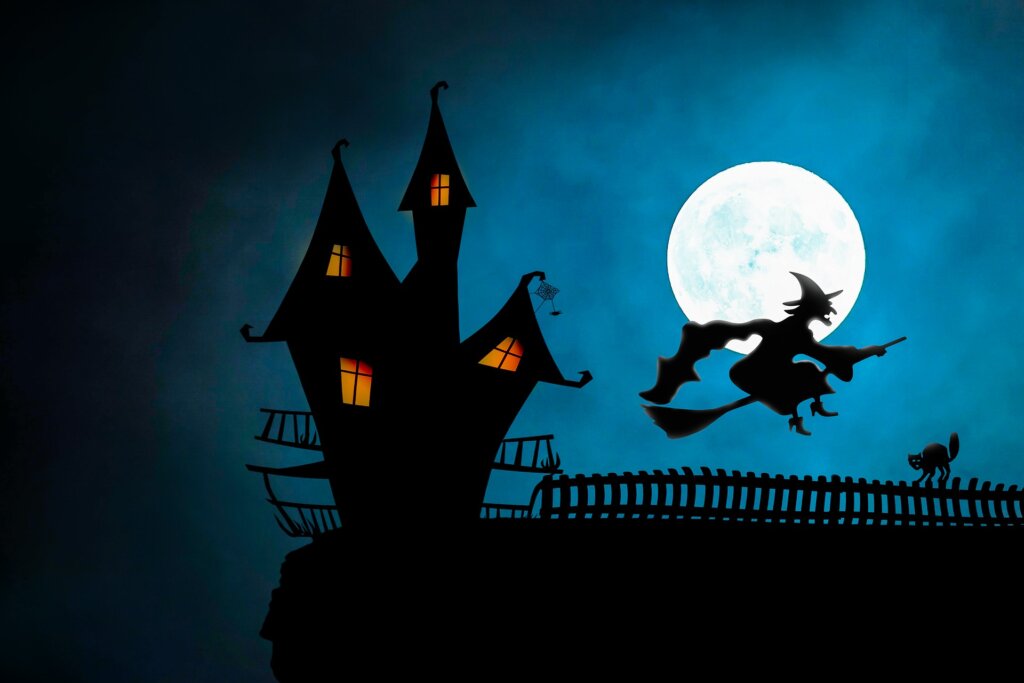Ever wonder where our Halloween traditions, superstitions and myths come from? Like carving pumpkins or wearing scary costumes?
Halloween evolved from the ancient Celtic festival Sow-in also known as the Celtic New Year which fell between October 31st and November 1st.
The celebration marks the end of summer the harvest season and the beginning of winter. The ancient Celts believed that on the night before the new year, the boundary between the world of the living and the world of the dead was at its thinnest.
It was a time to welcome ghosts of ancestors back home, while also being weary of malevolent spirits who crossed over as well.
Because this was a night where the worlds of the living and the dead, and the past and the future were intertwined, Sow-in was also thought to be the perfect night for divination and predicting what was to come in the new year.
Many Halloween superstitions centered around seeing spirits and foretelling one’s fate emerged from this time.
Related articles:-
- 11 most unusual superstitions from around the world
- 15 superstitions and myths associated with mirrors that will definitely creep you out
- 15 fascinating facts about Norse mythology
- 10 signs that your house is definitely haunted by ghosts
Here are 11 Halloween traditions, superstitions, and myths to make your holiday a little spookier:-
11. Jack O’ Lanterns
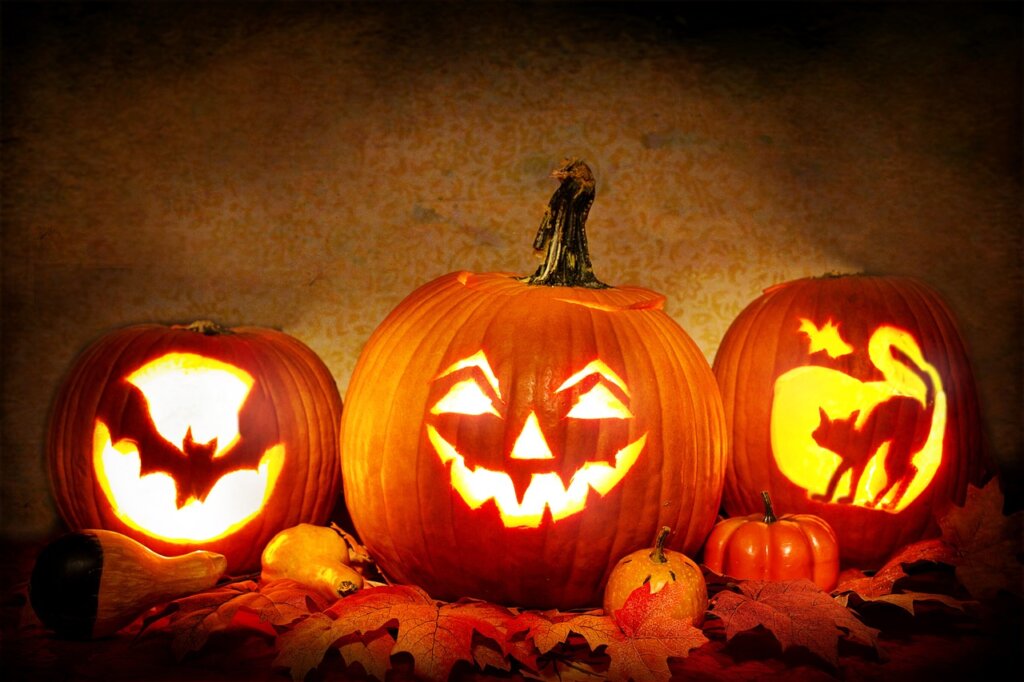
Before there was Trick or Treating, Celtic people went door to door collecting food for the Sow-in “feast of the dead.”
Scary faces were carved into turnips and candles would be placed inside to create lanterns that people carried with them to keep away evil spirits and light their way through the night.
These were the first Jack O’ Lanterns. When Irish immigrants brought Halloween to America, pumpkins were substituted for turnips as they were more available and easier to carve.
These lanterns wouldn’t be referred to as Jack O’ Lanterns however until the 18th century, when an Irish folktale about a man known as “Stingy Jack” began to circulate.
“Stingy Jack” was a drunken man who tricked the devil from taking his soul and therefore when he died wasn’t allowed into heaven or hell but instead was doomed to wander the place between the living and the dead.
The devil gave him a hot coal which he placed inside a turnip to make a lantern to guide his lost soul. It is believed that placing a lit Jack O’ Lantern outside your house on Halloween night will help guide lost spirits home.
10. Black Cats
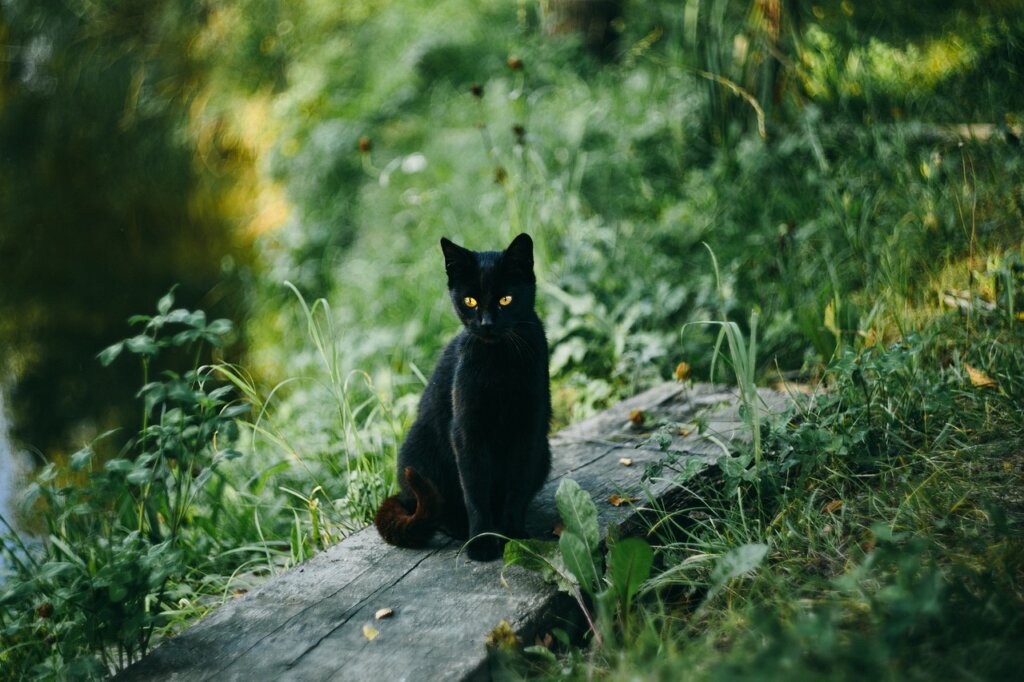
Black cats grace many Halloween decorations throughout the years. Often used as a symbol of bad luck, the black cat’s bad reputation dates back to the Dark Ages, when witch hunts were pretty common.
Often the black cat cats were said to be the compliances of the women who were accused of witchcraft, or demonic animals that had been given to them by the devil.
They also believed that if a black cat was seen lurching around the surroundings during Halloween, a witch was certainly around the corner.
According to a medieval myth, Satan turned himself into a cat while socializing with witches. But nowadays, it’s considered good luck for a black cat to cross your path in Ireland, Scotland, and England.
9. Halloween Costumes
Whether a bed sheet with eye holes, a dime store mask, or a horrifying outfit worthy of the Met Gala, it’s fun to dress up at Halloween.
But spooky fancy dress might return to the very serious origins of Halloween nearly 2,000 years ago. Archaeologist Dr Daniel Curley says: “Monsters and manifestations would emerge at Halloween.”
Locals would stay indoors in fear of being dragged into the other world. If you had to go outside, you wore a costume and mask to look hideous.
That way you would be left alone and not dragged into the otherworld. In Scotland, this may have been preserved in one of the traditions and superstitions of “guising”, whereby children go out on Halloween to sing a song, tell a story, or joke to neighbors while disguised in a mask.
8. Trick or Treating
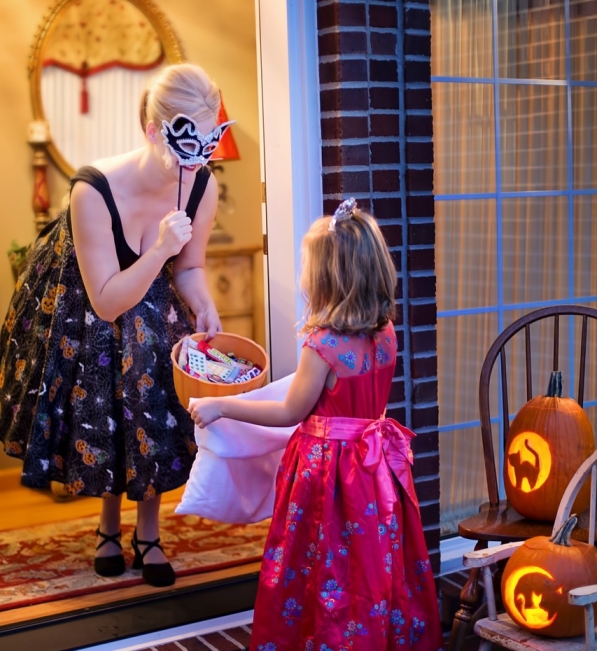
Trick or treating is fine fun for kids, as they hoover up candy from adults who are too afraid to say “no” in case their house gets covered in toilet paper, eggs, or worse. But the tradition of going to neighbors’ at Halloween to receive food began with adults.
In 16th century Britain, on November 2nd, known as All Souls’ Day, paupers would go begging at the doors of their fellow town folk for food in exchange for praying for their dead relatives.
Known as “Souling”, over time this practice became the preserve of poor children, who would be given soul-cakes at Halloween.
The actual act of Trick or treating shares its origins with a Christmas tradition called Belsnickling. The belsnickel will decide if you are impish or admirable.
Jim Halpert. Cheer or fear? Belsnickel is here! I judge your year as impish. Popular in the eastern States and Canada in the 18th and 19th centuries, this comes from the German Christmas custom of Peltznickel.
It involved adults in costumes performing tricks or simply frightening their neighbors’ children, and being rewarded for their talents with treats.
7. Bats
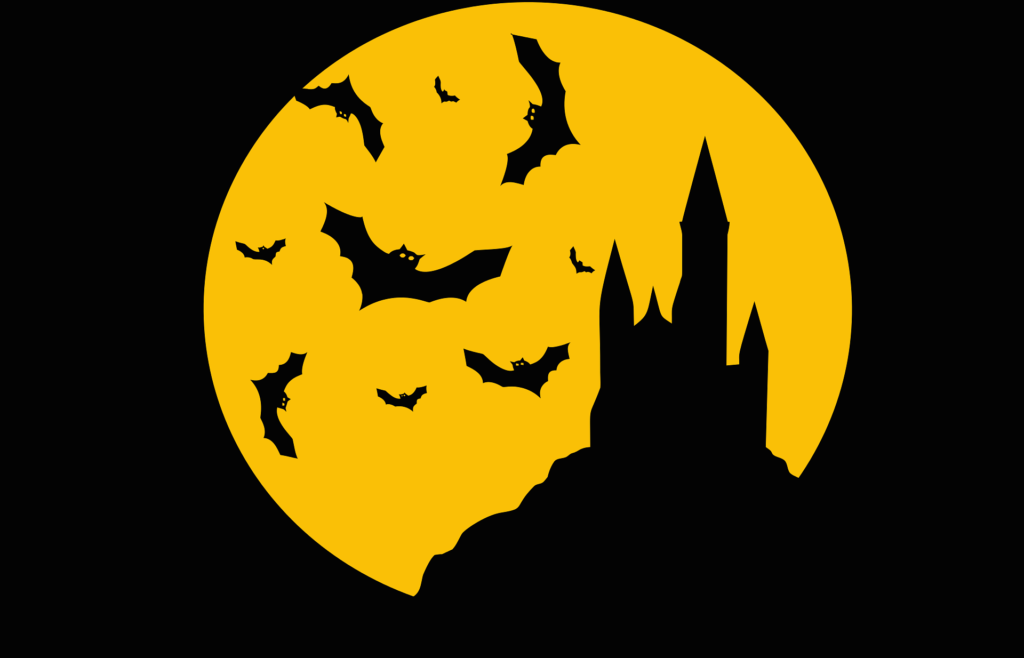
Medieval folklore described seeing a bat on Halloween to be quite an ominous sign as bats were considered witches’ familiars.
According to a myth, if a bat was spotted flying around one’s house three times, it meant that someone in that house would soon die.
Another myth was that if you saw a bat in your house on Halloween, it was a sign that your house was haunted because ghosts had let the bat in.
6. Aztec Halloween
This Halloween is very similar to Día De Los Muertos in Mexico, which is celebrated on November 1st and 2nd. In fact, it’s so similar that many people think the ancient Aztecs celebrated Halloween too.
However, The Day of the Dead as we know it certainly comes from 16th century Spanish settlers practicing their Catholic traditions of All Saints and All Souls Day.
But it may have adopted elements of an indigenous festival. The Aztec calendar devoted two months – what Europeans called August and September – to remembering the dead, one for adults and one for children.
This may explain why Mexico unusually dedicates All Saints’ Day to children and All Souls’ Day to adults.
5. Satanic Halloween
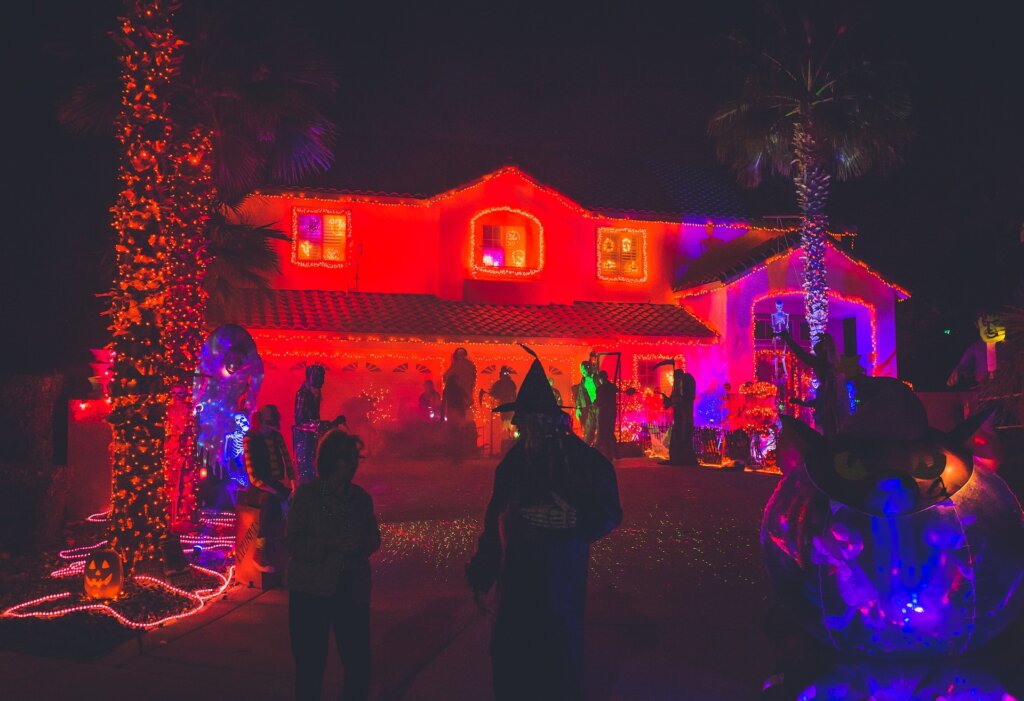
Halloween Is Satanic! Halloween is occult! Halloween is devil worship! You’ve probably heard this before, especially if you grew up as a Christian in the USA.
It’s true that Halloween’s roots are in pre-Christian traditions. But non-Christian Europeans didn’t believe in the devil. Instead, to them, Halloween was a festival marking the end of the harvest and celebrating the memory of the dead.
As the Catholic Church spread across Europe, it absorbed elements of other religions and often combined its own festivals with pagan ones.
Early Eastern Christians celebrated the saints on May 13th. In AD 837/837 CE, when Pope Gregory IV made November 1st the official All Saints’ Day, it helped remove any pagan overtones from Halloween parties.
At the same time, Christianity associated all other gods with Satan. In Jewish tradition, Satan was an angel who caused suffering for humans as a test of their faith in God.
By the time Christianity came along, Satan had become the all-powerful Devil who opposed God from the underworld, which took on the name of the Norse god who lived there, Hel.
Because the pagan Hallowe’en was about commemorating the dead, who came from the underworld where Christians believed Satan lived, modern Christians started to associate it with devil worship. When in fact, it’s much more about remembering loved ones and eating food.
4. Candles
Ever wonder if your house is haunted? If you light a candle on Halloween night and the candle goes out or turns blue then it is a sign that a ghost has crossed over from the other world and that you are in the presence of spirits.
If the flame suddenly grows taller you will be visited by a mysterious stranger. You can also tell your fortune by candlelight, Ask the candle yes or no questions, If the wax runs to the right, the answer is yes, if it runs to the left, it’s a no and if the wax runs down both sides then the candle is unsure.
Light an Orange candle at midnight on Halloween and let it burn until dawn you will have good fortune for the coming year. *However please don’t try this one at home, it’s never safe to leave candles unattended.
3. Spiders

Spiders and spider webs make for creepy, crawly Halloween staples. As a common source of fear, they join the ranks of bats and black cats as being evil companions of witches during medieval times.
One superstition held that if you spot a spider on Halloween, it means that the spirit of a deceased loved one is watching over you.
And in another superstition, if a spider falls into a candle-lit lamp and is consumed by the flame, witches are nearby.
2. Crossroads
Crossroads are thought to be supernatural spaces that attract traveling spirits. Some believed that the devil lingered around crossroads and that you could meet him there to exchange your soul for a wish.
In Welsh folklore, if you stand at the center of a crossroads on Halloween night you can hear a spirit whisper your future. The Welsh also believed that you could come across a “fairy dog” at a crossroads.
If you see this large black dog you should leave before it barks three times as those who hear the three barks of the fairy dog are doomed to die.
In Scottish folklore, if you bring a three-legged stool to a crossroads you will be told which of your friends will die in the coming year.
Fortunately, you can prevent this by bringing an article of clothing from the person who is supposed to die to the crossroads and throwing it into the air while shouting their name.
1. Witches

A pointy black hat, warty nose, and stirring a magical potion in her cauldron is a stereotypical image of the haggard witch but actually, it stems from a pagan goddess known as “the crone,” who was honored during Samhain.
Also known as “the old one” and the “Earth mother,” the crone symbolized wisdom, change, and the turning of the seasons. Today, the kind, all-knowing old crone has morphed into the menacing, cackling witch.
